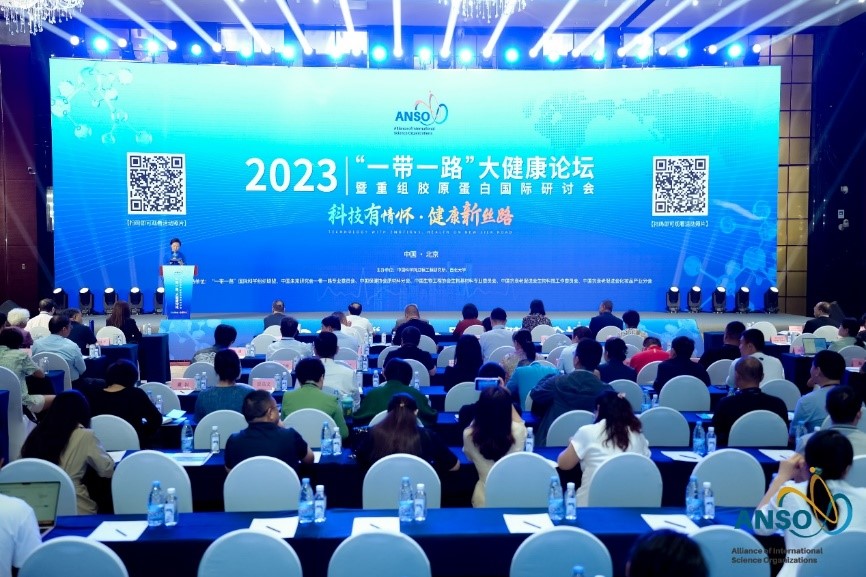A German research team led by Professor Dr. Werner E. G. Müller of the Institute of Physiological Chemistry at the University Medical Center of Johannes Gutenberg University Mainz (JGU) and scientists from the Chinese Academy of Sciences and the Chinese Academy of Geological Sciences have launched a Chinese-German Joint Center for Bio-Inspired Materials. Here, the researchers will be able to work closely together on projects in the field of regenerative medicine, an area with a promising future. The aim is to use the strategy of marine animals to develop novel bio-inspired bone replacement materials and medications to ameliorate osteoporosis. In addition to the German Federal Ministry of Education and Research (BMBF) which initiated this lighthouse project, the European Union (EU) and the University Medical Center Mainz will support the Joint Center by funding the innovative projects on the development of customized bone implants applying advanced 3D printing techniques. The Joint Center has been established for a period of ten years. It is based both at the Institute of Physiological Chemistry of the Mainz University Medical Center and at the Chinese Academy of Geological Sciences together with Tsinghua University in Beijing, the Shanghai Institute of Materia Medica of the Chinese Academy of Sciences in Shanghai as well as other distinguished institutions in China.
In brief, the researchers involved in this new Joint Center will collaborate on the investigation of bio-inspired materials, in other words, on substances that mimic those structures and functions fabricated by nature. "The inorganic structures of certain deep-sea organisms, such as sponges, are based on genetic blueprints. We will use those blueprints to develop synthetic bone replacement materials. Specifically and together with our Chinese partners, we are looking to create bio-inspired scaffolds from biosilica in the laboratory that can function as a basis for bone repair," explained Professor Dr. Werner E. G. Müller. According to the molecular biologist, the potential of this research area is immense since such intelligent organic and inorganic materials have impressive properties, such as self-repair.
Coinciding with the launch of the Joint Center, the EU is providing financial support to a further project initiated by Müller and his Chinese colleagues that aims to develop customized rapid prototyping of bioactive scaffolds using applying three-dimensional printing. The scientists from both sides participating in this project are funded by the European Union by a grant of nearly EUR 2 million. "Using 3D printing technology, we plan to develop tailor-made implants that make it possible to precisely correct a tissue defect and also to restore stability," Müller continued to explain. For this purpose, a novel bio-inspired inorganic material will be used that is biocompatible and stimulates bone-forming cells. "This material gives the cells the ability to form new endogenous bone tissue," added Müller. In the 3D printing process, the material is built up layer by layer with the aid of a special binder. In the first phase, a computer-aided design (CAD) program is employed that makes it possible to design the bone implant with millimeter accuracy.
The Chinese-German Center for Bio-Inspired Materials, which was launched by the German Federal Ministry of Education and Research and which has been funded as a joint lab over the past three years, is also conducting research in other areas, such as the development of intelligent inorganic/organic hybrid materials with novel optical and mechanical properties that have technical applications and can be used, for example, in sensors.
In addition to their work at the Joint Center, Professor Dr. Werner E. G. Müller and his team are also involved in other research projects. These include the ERC Advanced Grant "Biosilica" obtained in 2010, i.e., the most prestigious grant of the EU, the EU large-scale integrating project "BlueGenics", and the EU-funded Marie Curie international research staff exchange project "MarBioTec" for European and Chinese scientists. Mainz-based scientists Professor Dr. Xiaohong Wang and Professor Dr. Heinz-Christoph Schr?der of the Institute of Physiological Chemistry at the Mainz University Medical Center are also acting as project managers.
According to the Chief Scientific Officer of the Mainz University Medical Center, Professor Dr. Dr. Reinhard Urban, the establishment of the Chinese-German Center for Bio-Inspired Materials is significant for two reasons. "On the one hand, the Joint Center is another important cornerstone in realizing the ambitious goal of creating bone replacement materials with the help of siliceous sponges. On the other hand, the establishment of this joint center at Johannes Gutenberg University Mainz sends out a strong signal bearing the message that the Mainz University Medical Center is open to unconventional ways of thinking and prepared to take new routes. I am further convinced that the establishment of the new Joint Center in Mainz will provide a boost to our ongoing internationalization of science and research."
Blue Biotechnology
The so-called Blue Biotechnology is primarily concerned with the biotechnological use of marine organisms. Of particular interest are sponges and deep-sea bacteria that live under extreme conditions in more than 1,000 meters below the sea level. These organisms are considered to be a source of novel valuable substances that can be used in biotechnology and biomedicine. While the majority of the known enzymes break down on exposure to high temperatures, the biocatalysts produced by deep-sea bacteria remain active under extreme conditions, even in the vicinity of marine hydrothermal vents.
What makes blue technology so interesting for research is the fact that even obviously simple organisms, such as marine sponges, are remarkably similar to humans in many ways. The evolutionary relationship between these oldest animals and human beings is surprisingly close, as the Mainz research team has demonstrated in recent years by means of molecular biological techniques. In addition, these organisms produce a variety of substances that have evolved a high degree of specificity and effectiveness during the course of evolution, and hence have attracted increasing interest with regard to their possible therapeutic use in humans, for example for the treatment of viral infections. (Universit?t Mainz)
 Search
Search




 京公网安备110402500047号
京公网安备110402500047号